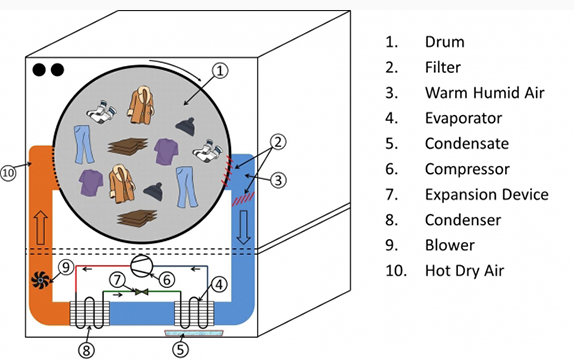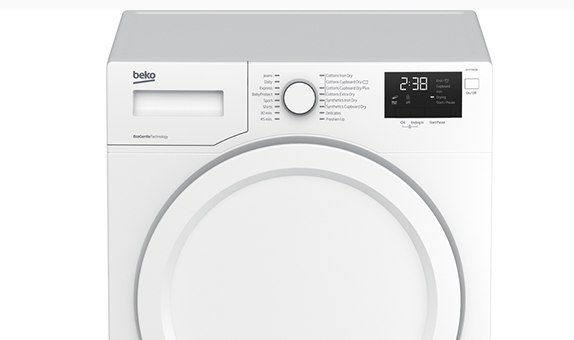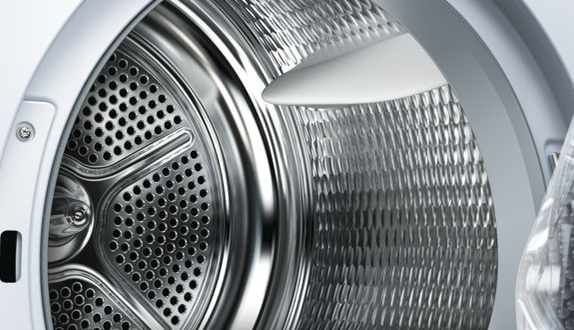Guest blog by Kavan & Matt
Summer is over and our washing days become a different beast. The gentle breeze and warming sun have all but gone, so what now; utilise every available drying space in the warmer parts of your home. Or we can use a tumble dryer. There are quite a few options out there, but I am going to talk about the new(ish) kid on the block: the heat pump tumble dryer.
Heat pump tumble dryers are a relatively new technology that dramatically reduces how much it costs to run compared to a standard condenser dryer.
The job of the heat pump is to reheat the air that’s circulating within the dryer. After hot air has passed through the drum, absorbing moisture from your clothes, it passes  through filters where the air is partly cooled and moisture is removed from the air, as condensation. The water collected will be deposited into a water tank, as with a normal condenser tumble dryer. Meanwhile, the warm air is re-heated and circulated back to the drum. The reuse of hot air means energy is kept within the machine instead of being allowed to escape.
through filters where the air is partly cooled and moisture is removed from the air, as condensation. The water collected will be deposited into a water tank, as with a normal condenser tumble dryer. Meanwhile, the warm air is re-heated and circulated back to the drum. The reuse of hot air means energy is kept within the machine instead of being allowed to escape.
This technology results in big savings on energy bills due to the use of heat already created. In tests these savings average out at around £34 per year, with some models costing as little as £25 a year to run, compared to £77 for an average tumble dryer. This can vary as someone who uses it more often will gain even greater savings. Energy ratings are often A++ as opposed to C, or at best B on standard dryers.
Heat pump dryers are now more affordable and with the energy savings can prove a  canny purchase. We offer several models starting from £379.99. Shown here is the Beko heat pump dryer. With this EcoSmart A++ energy rated Heat Pump Condenser Dryer you can not only dry up to 7kg of wet laundry quickly and efficiently but it also offers you sensor drying, timed programmes and special care programmes to suit your drying needs.
canny purchase. We offer several models starting from £379.99. Shown here is the Beko heat pump dryer. With this EcoSmart A++ energy rated Heat Pump Condenser Dryer you can not only dry up to 7kg of wet laundry quickly and efficiently but it also offers you sensor drying, timed programmes and special care programmes to suit your drying needs.
Thanks to the Auto Cool down phase you can comfortably unload the laundry as soon as the load is complete while the Automatic Anti-creasing function gently separates the laundry to ensure it remains crease-free to save time and effort with the ironing (hurrah to that!) They are all also suitable for indoor use as the condenser units require no external venting.
What are the pros and cons of heat pump tumble dryers?
Pros: Energy costs are half or less compared to other electric dryers that don’t use a heat pump. No vent required.
Cons: Heat pump dryers tend to be slower at getting clothes dry compared to non-heat pump dryers, however many will have timer functions.
We also stock a great range of heat pump dryer models from Bosch, Zanussi, Panasonic, LG and Miele – View them here.





